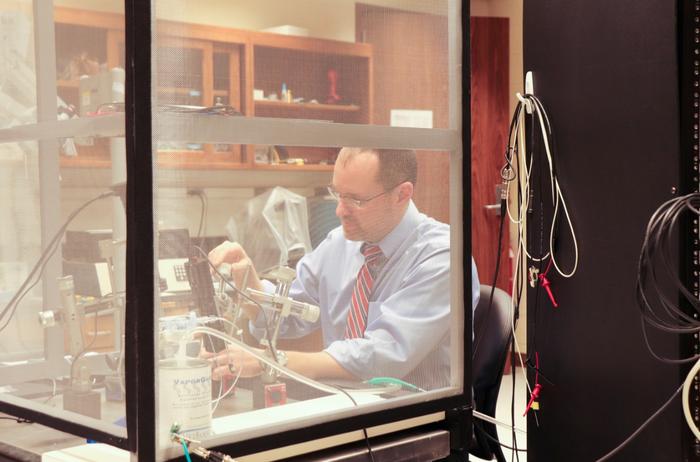A groundbreaking study by researchers at the University of Cincinnati has shed light on the use of machine learning in the automation and detection of abnormal brain activity, a phenomenon referred to as "spreading depolarizations" or SDs. This research has significant implications for the monitoring of patients who have suffered acute brain injuries, including strokes and traumatic brain injuries (TBI). With about 60% to 100% of such patients believed to experience these debilitating events, the urgency for effective monitoring and intervention is undeniably high.
At the heart of this research is Dr. Jed Hartings, a prominent figure in the Department of Neurosurgery at UC. Hartings explains that during spreading depolarizations, brain cells lose their electrical charge, rendering them incapable of functioning properly. This electrical disruption acts similarly to a dead battery, and the consequences can be catastrophic as it spreads like waves in a pond, interfering with every aspect of cellular function. This domino effect can persist for days or even weeks, severely compromising patient outcomes.
Traditional SD detection has relied heavily on neural electrode strips, which are invasive and require specialized training for clinicians to interpret the data collected. Given the complexities and nuances involved, few physicians possess the specialized skill set necessary to diagnose SDs effectively and reliably. This limitation not only creates a bottleneck in patient care but also increases the risk of overlooking critical brain activity.
Recognizing these challenges, Hartings and his research team embarked on an ambitious project to develop a machine learning model capable of automating this intricate process. By leveraging over 2,000 hours of monitored brain data from 24 patients hospitalized for severe TBI, the researchers identified more than 3,500 unique SD events. This substantial dataset ensured that the machine learning model was trained thoroughly, allowing it to discern patterns in brain activity that typically precede or coincide with SDs.
The performance of the model in identifying SDs has yielded remarkable results. It demonstrated a high degree of sensitivity and specificity, matching the capabilities of expert human scorers. Even more significantly, the algorithm was able to detect instances of SD that were missed by human reviewers, potentially due to a greater degree of objectivity inherent in machine learning processes. The researchers tested the algorithm’s limits and found it could still perform effectively with minimal data—just one voltage reading every ten seconds—far less than the conventional method, which typically captures 256 data points per second.
Hartings emphasizes the broader implications of these findings, particularly the potential for automated SD detection technology to revolutionize care in neurosurgical centers. Currently, many centers are eager to monitor SDs but lack the necessary expertise and resources. By automating the detection process, healthcare systems can reduce barriers to effective patient monitoring and potentially expedite the delivery of care. This shift could significantly enhance patient outcomes and spur further research into effective treatments for SDs.
However, the journey is far from over. Hartings cautions that while the preliminary results are promising, additional validation and development are crucial before fully replacing human expertise with automation. Recognizing the value of human oversight, he highlights that even enhanced machine learning tools can only complement existing clinical practices. The immediate benefit would be a reduction in workload for medical professionals, along with improved response times, as automated alerts can notify physicians to review patient data sooner and take necessary actions.
Despite the optimistic trajectory of this research, certain limitations remain. One significant hurdle is the requirement for invasive electrode strips, which restricts patient monitoring predominantly to those undergoing surgery. To extend the benefits of SD monitoring to a broader patient population, Hartings and his colleagues are actively exploring non-invasive detection methods. The ongoing development of such technologies could enable expanded access to rapid and effective SD monitoring for a wide array of patients suffering from acute brain injuries.
The research team is not resting on its laurels. Their current objectives include refining the machine learning algorithm with larger data sets and testing the software’s practicality for clinical applications. The aim is to partner with additional institutions to trial the software in real-world settings. This collaborative approach will help in the continuous evolution of the tool and its integration into patient care.
Moreover, they are conducting clinical trials like the INDICT trial, aimed at identifying optimal treatment modalities for patients experiencing SDs. The urgency of this research is underscored by the realization that having a more precise detection method coupled with enhanced treatment options could substantially improve patient care and recovery outcomes.
In conclusion, the work being done by Dr. Hartings and his team at the University of Cincinnati is pioneering a new frontier in the monitoring and treatment of brain injuries. Their innovative approach utilizing machine learning offers hope for automating the detection of spreading depolarizations, which could ultimately expedite the path to better patient outcomes and contribute to a better understanding of brain injuries. This research exemplifies the vital intersection between neuroscience and technology, paving the way for future advancements in clinical practice.
Subject of Research: Machine learning in detection of spreading depolarizations
Article Title: Automated detection of spreading depolarizations in electrocorticography
News Publication Date: 12-Mar-2025
Web References: Nature Scientific Reports
References: 10.1038/s41598-025-91623-7
Image Credits: Photo/Julie Forbes/University of Cincinnati
Keywords: Neurosurgery, Machine learning, Brain injuries, Clinical research, Neuroscience, Spreading depolarizations, Automated detection.




